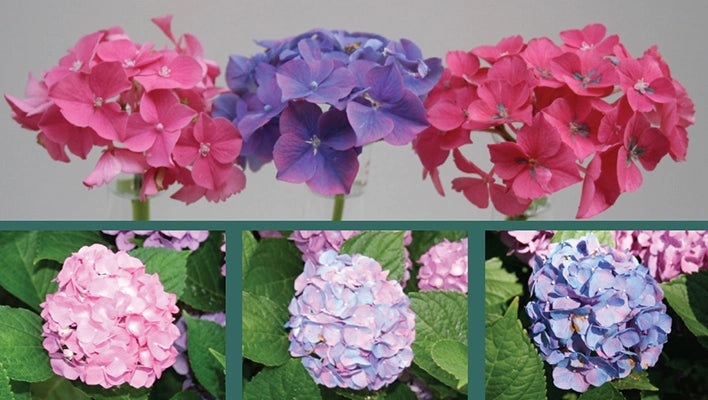Hydrangeas, with their stunning clusters of blossoms, are nature's way of painting the garden with vibrant hues. One of the most fascinating aspects of these blossoms is their ability to change colour based on the soil's pH level. Understanding and altering this natural phenomenon can turn your garden into a colourful canvas. Let's delve into the captivating world of altering hydrangea flower colours.
These beautiful flowering shrubs belong to the Hydrangeaceae family, and their blooms can exhibit a range of colours, including blue, pink, purple, and even shades in between. The key element influencing their colour is the soil's acidity or alkalinity. This factor determines the availability of aluminium in the soil, which in turn affects the pigmentation in the flowers.
In acidic soils (pH below 6), hydrangeas tend to produce blue flowers. This lower pH allows the plant to absorb aluminium, promoting the development of blue hues. Conversely, in alkaline soils (pH above 7), the flowers tend to exhibit pink or reddish tones due to the unavailability of aluminium to the plant.
For those eager to transform the colour of their hydrangeas, adjusting the soil's pH is the primary method. To turn blossoms blue, increase soil acidity by adding amendments such as aluminium sulfate, pine needles, or coffee grounds. These amendments help lower the pH, making aluminium more accessible for the plant to absorb, thereby enhancing the blue coloration of the flowers.
Conversely, to encourage pink or red hues, raising the soil pH is essential. This can be achieved by incorporating materials like garden lime or wood ash. These substances reduce aluminium availability, leading to the production of pinker shades in the hydrangea blooms.
The process of altering soil pH requires patience, as changes don't occur overnight. It might take a full growing season for the adjustments to reflect in the flowers. Regular testing and monitoring of the soil's pH levels are crucial to maintain the desired colour transformation.
However, it's important to note that not all hydrangea varieties respond the same way to changes in soil pH. While most bigleaf hydrangeas (Hydrangea macrophylla) demonstrate this colour-shifting ability, other species like oakleaf hydrangeas (Hydrangea quercifolia) and panicle hydrangeas (Hydrangea paniculata) are generally less affected by soil pH changes. For these varieties, colour adjustments might not be as pronounced or may not occur at all.
Moreover, environmental factors, such as sunlight exposure, temperature, and hydration, can also influence the intensity and vibrancy of hydrangea colours. Proper care and suitable growing conditions contribute to healthier plants and more striking blossoms.
The allure of altering hydrangea colours lies in the art of coaxing nature to produce a personalized palette in your garden. Witnessing the transformation of blooms from one colour to another can be a rewarding and delightful experience for any gardening enthusiast.
In conclusion, the captivating ability of hydrangeas to change colour based on soil pH is a testament to nature's wonders. By understanding and manipulating this natural process, one can create a kaleidoscope of colours, adding an enchanting touch to any garden landscape. Whether aiming for serene blues or romantic pinks, the art of changing hydrangea flower colours is a delightful journey that celebrates the beauty and versatility of nature.
Here is a great article if your interested in the science https://www.americanscientist.org/article/curious-chemistry-guides-hydrangea-colors

